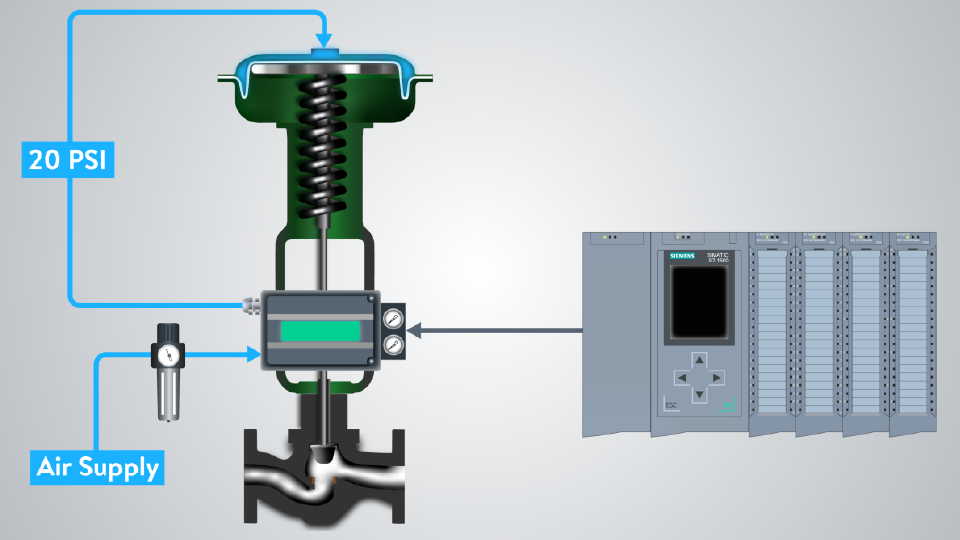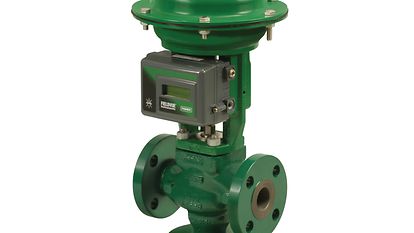How Control Valves Influence Power Performance in Industrial Settings
How Control Valves Influence Power Performance in Industrial Settings
Blog Article

Maximize Power Financial Savings and Convenience With Advanced Structure Automation Controls
In the realm of contemporary design and facility management, the combination of sophisticated structure automation manages stands as an essential innovation. The merging of technology and sustainability has birthed a new era where power performance, comfort optimization, and functional streamlining are no much longer remote ambitions however obtainable facts. By utilizing the power of automation, buildings can adapt, respond, and develop in manner ins which were when unbelievable. The potential for considerable energy cost savings and improved comfort is not just a guarantee yet an opportunity waiting to be fulfilled. This paradigm change in building monitoring holds the essential to unlocking a globe where environmental conscientiousness and passenger health harmoniously exist side-by-side within the walls of our structures.
Power Performance Advantages
Power effectiveness advantages can significantly lower power usage and functional expenses in buildings. By carrying out energy-efficient techniques and innovations, building proprietors and operators can accomplish significant savings while likewise adding to environmental sustainability. One of the main benefits of enhancing power effectiveness in structures is the decrease of utility expenses. Energy-efficient systems, such as sophisticated structure automation controls, can enhance the usage of sources like home heating, air conditioning, and lights, leading to lower power expenditures with time.
Moreover, boosted power effectiveness can prolong the lifespan of structure devices and systems. By operating extra efficiently, heating and cooling systems, light, and other structure elements experience much less wear and tear, leading to reduced upkeep and replacement prices. Additionally, energy-efficient buildings frequently command greater property worths and rental rates, providing long-lasting economic advantages to owners.
Additionally, energy performance can enhance passenger convenience and productivity. Appropriately managed interior settings with optimal lighting and thermal problems produce an even more positive and favorable work area, bring about improved worker satisfaction and efficiency. On the whole, the energy efficiency benefits linked with sophisticated building automation controls are multifaceted, encompassing cost financial savings, ecological stewardship, and owner health.
Enhanced Comfort Control
Enhancing comfort control in structure settings needs an innovative assimilation of innovative automation systems for optimum passenger wellness. By utilizing innovative structure automation controls, facilities can tailor the interior setting to satisfy the particular needs and choices of passengers. control valves.
Improved convenience control exceeds basic temperature level modifications. It includes attributes such as individualized settings, tenancy sensors, and all-natural light application to create a dynamic and receptive atmosphere. By integrating these advanced controls, structures can not only enhance comfort however also boost power efficiency by maximizing system operations based on real occupancy and use patterns. Eventually, focusing on resident convenience through advanced automation systems leads to a much more enjoyable and much healthier indoor environment.
Operational Performance Improvements

Furthermore, the execution of real-time monitoring and analytics tools allows structure operators to determine power inadequacies and operational abnormalities without delay. By look what i found continuously checking power usage patterns and system performance metrics, modifications can be made in real-time to maximize energy usage and make certain peak functional efficiency. control valves. Furthermore, integrating need response methods right into structure automation controls can even more improve functional performance by dynamically adjusting power usage based on grid conditions and prices signals
Indoor Climate Optimization
Effective interior environment optimization is an essential facet of structure automation controls, ensuring occupants' comfort and well-being while taking full advantage of power savings. By utilizing advanced sensors and controls, building automation systems can continuously readjust and check temperature level, moisture degrees, air high quality, and air flow to produce an optimal indoor environment. Keeping regular and comfy conditions not just boosts owner contentment yet additionally enhances performance and total wellness.
Indoor climate optimization also plays an essential role in energy efficiency. By fine-tuning heating, ventilation, and cooling systems based on real-time data and occupancy patterns, developing automation controls can substantially decrease energy intake - control valves. Executing strategies such as demand-controlled air flow and thermal zoning can help decrease energy check my blog waste while making certain that each area of the structure receives the needed conditioning.

Lasting Atmosphere Creation
Building automation regulates not just maximize indoor climate conditions for power performance and owner convenience however likewise lay the foundation for creating a lasting setting with calculated monitoring of systems and sources. By incorporating sophisticated building automation technologies, such as sensors, actuators, and smart software application, facilities can change and keep track of energy use in real-time to reduce waste and reduce their carbon impact. These systems allow predictive upkeep, recognizing potential concerns prior to they escalate and maximizing tools performance to enhance long life and performance.
Additionally, sustainable environment development prolongs beyond power monitoring to incorporate water conservation, waste decrease, and indoor air high quality improvement. Structure automation controls can control water usage, detect leakages, and guarantee proper garbage disposal methods, adding to overall sustainability efforts. In addition, by keeping an eye on and controlling ventilation and filtering systems, these technologies improve owner health and efficiency while lowering energy usage connected with HVAC procedures.
Verdict
Finally, progressed structure automation manages deal browse around this site substantial advantages in regards to energy cost savings, comfort control, functional performance, indoor climate optimization, and producing a lasting setting. By implementing these controls, buildings can accomplish optimum efficiency while reducing energy usage and boosting owner comfort. It appears that the usage of innovative automation technology is vital in boosting building performance and producing an extra lasting future.
Power efficiency benefits can dramatically reduce energy usage and functional prices in buildings. Generally, the power performance benefits associated with sophisticated structure automation controls are diverse, incorporating cost financial savings, environmental stewardship, and occupant health.
Furthermore, including demand reaction techniques into building automation controls can better improve operational efficiency by dynamically readjusting energy use based on grid problems and pricing signals.
Structure automation manages not only maximize indoor climate problems for energy performance and passenger comfort yet also lay the structure for creating a lasting environment via calculated management of sources and systems.In verdict, advanced structure automation controls deal significant benefits in terms of power savings, convenience control, operational effectiveness, indoor climate optimization, and developing a sustainable setting.
Report this page